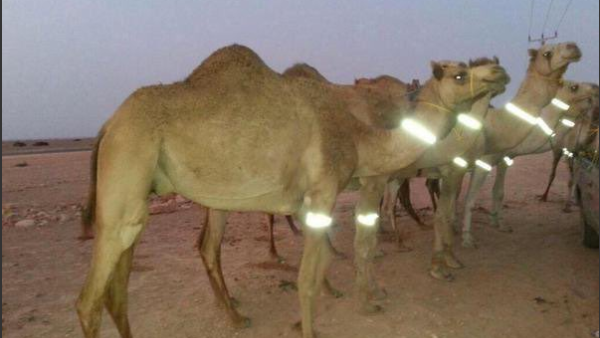Camel collisions are a serious problem for drivers in the Gulf.
But in Oman, authorities have come up with a smart solution to the threat: reflector bands specially designed for dromedaries.
عاجل
— سلطان خليفةالبوسعيدي (@uaeae71) 19 June 2016
سلطنة عُمان / بدأت بوضع ملصقات ضوئية على الإبل للحد من حوادث السيارات ليلا. pic.twitter.com/0nHBKgCVoq
The phosphorescent bands are designed to reveal the locations of camels on and near roads, just as they’re used by cyclists or pedestrians in less sandy climates.
In the past, driving in the Omani desert meant an enormous sand-coloured beast might loom out of the dark at any moment, giving drivers little choice but to plough at high speed into a formidable and deadly animal mass. With the new technology, it is hoped, drivers will be able to see the white bands from a safe distance, allowing them to smoothly manoeuvre their vehicle around the nocturnal creature.
The technique is not entirely new. In Saudi Arabia, phosphorescent bands have been used to prevent clashes between camels and cars for some time. Some 200 incidents of such crashes are reported in KSA each year, and while the extent of the destruction they cause is tied to the size and weight of the camel in question, the fatality rate for such collisions is four times higher than for other causes of traffic accidents.
But not everyone’s convinced of the efficacy of phosphorescent camels. In a recent research paper 92% of respondents in Oman said they were concerned that, while the bands may be effective in open spaces, they might run into problems in wooded areas. “These bands could be easily removed due to brushing with vegetation and anchoring wires of utility poles, which camels utilize as a rubbing medium,” the report said.
Bethan Staton







